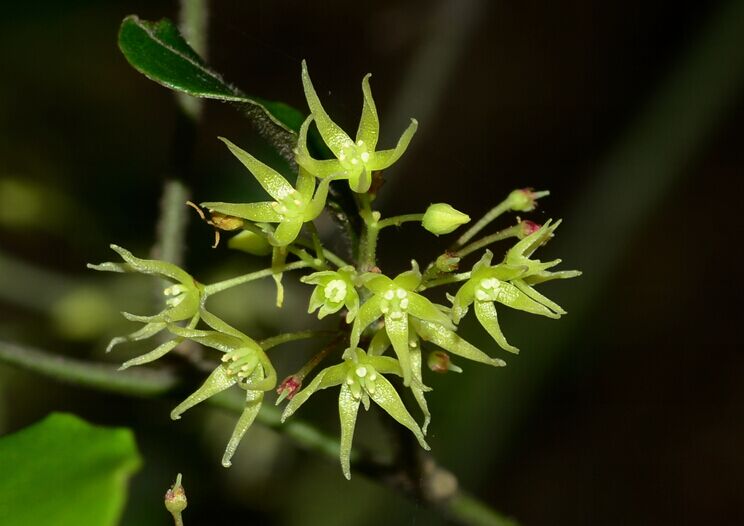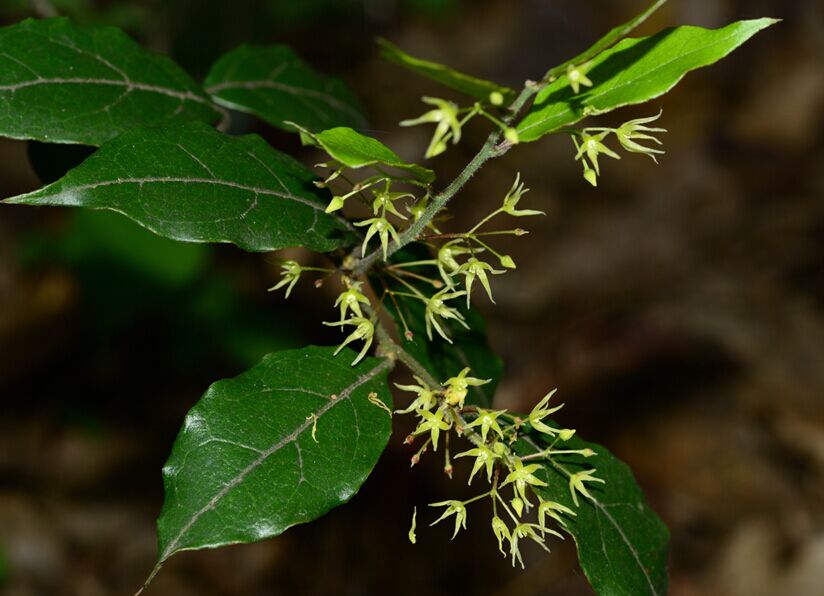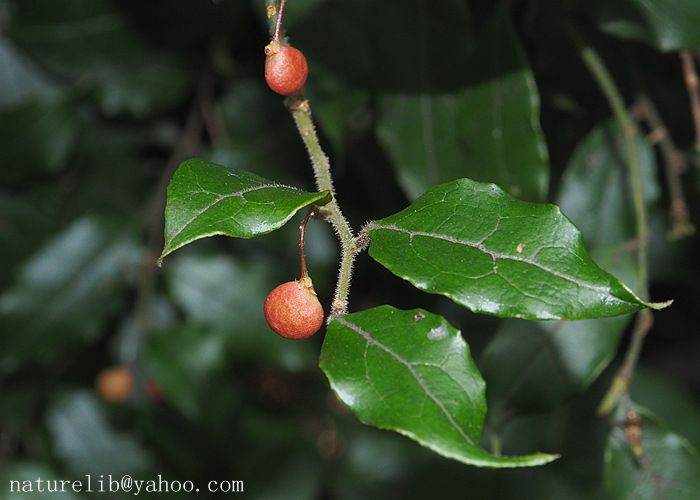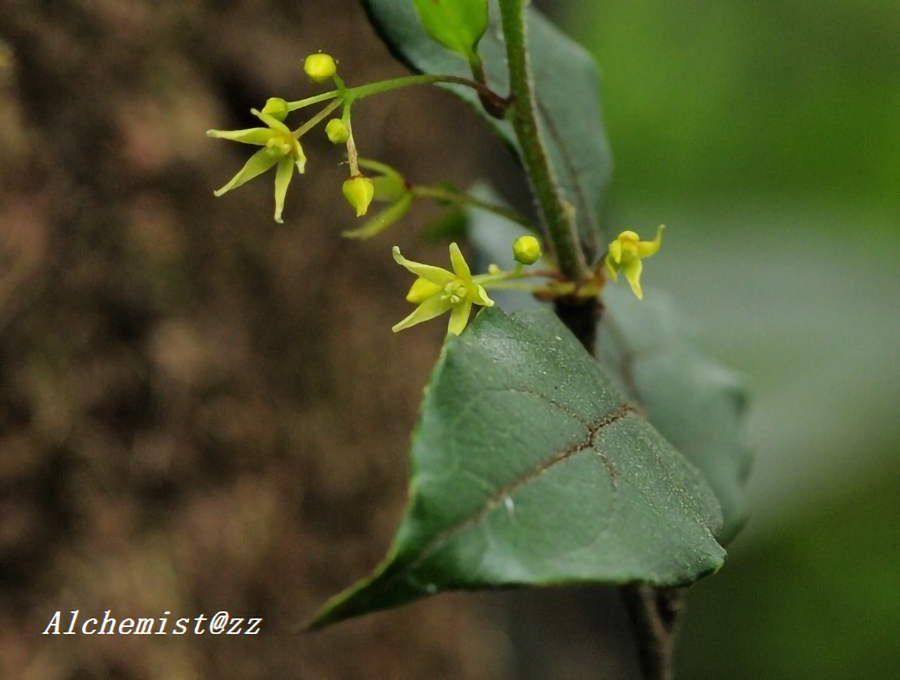尖叶清风藤 Sabia swinhoei
- Scientific Name: Sabia swinhoei Hemsl.
- Ref: J. Linn. Soc., Bot. 23:144. 1886
- Chinese Common Name: 尖叶清风藤 jiānyè qīngfēngténg
- Family: Sabiaceae
- Genus: Sabia
- Distribution: Valley forests, thickets on limestone hills; 300-2300 m. Fujian, Guangdong, Guangxi, Guizhou, Hainan, Hubei, Hunan, Jiangsu, Jiangxi, Sichuan, Taiwan, Yunnan, Zhejiang [N Vietnam].
- Photo: 04/04/2013
Woody climbers, to 8 m, evergreen. Branchlets long and straight pilose; bud scales pubescent, ciliate. Petiole 3-5(-10) mm, pubescent; leaf blade elliptic, ovate-elliptic, ovate, or broadly ovate, 5-12 × 2-5(-5.5) cm, papery or thinly leathery, abaxially shortly pilose or pilose only on midvein, adaxially glabrous but pubescent on midvein when young, lateral veins 4-6 pairs, reticulate veins sparse, base cuneate or rounded, apex acuminate to caudate-acute, or obtuse to subrounded. Cymes (1 or)2-7-flowered, 1.5-2.5(-22) cm, sparsely pubescent or tomentose; peduncles (0.4-)0.7-1.5 cm. Pedicel 2-4 mm. Sepals 5, with inconspicuous red dots outside, ovate or narrowly triangular, 1-1.5 mm, ciliate. Petals 5, white to light green, yellow, or purple, ovate-lanceolate or lanceolate, (3-)3.5-6 × 1-1.5 mm, 5-veined, apex acuminate. Stamens 5, 1-1.6 mm; filaments slightly to broadly flattened; anthers often inflexed, elliptic, introrse. Disk shallowly cup-shaped. Ovary glabrous, entire (or bifid). Schizocarp green to red or dark blue, suborbicular or obovoid, compressed, 7-9 × 6-8 mm; endocarp with inconspicuous midrib, with foveolate. Fl. (Jan-)Mar-Apr(-Jun), fr. Jul-Sep(-Oct). (Flora of China)

04/10/2016, Feilaifeng, Hangzhou

04/10/2016, Feilaifeng, Hangzhou

04/10/2016, Feilaifeng, Hangzhou

06/05/2016, Hangzhou, Zhejiang
